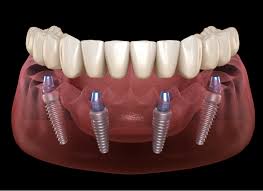Full Mouth Rehabilitation with Veneers: Is It Possible?
If you’re considering a total smile makeover, you may wonder whether full mouth rehabilitation with veneers is possible. The answer is yes—veneers can play a significant role in Full Mouth Rehabilitation, particularly when aesthetics and minor functional improvements are the primary goals. Veneers are thin, custom-made shells designed to cover the front surface of teeth, offering both cosmetic transformation and moderate reinforcement. When integrated thoughtfully into a comprehensive dental treatment plan, veneers can contribute to a full mouth restoration that is both stunning and functional.
When Are Veneers Used in Full Mouth Rehab?
Veneers aren’t always the go-to solution for full mouth rehabilitation, but they can be highly effective in certain cases. Dentists may incorporate veneers into a treatment plan when:
- Teeth are structurally sound but visually compromised by stains, chips, or irregular shape
- The bite is stable, and no major occlusal corrections are required
- There’s minimal tooth decay and no need for full crowns or implants
- Patients want a non-invasive, aesthetic-focused solution
- Gums are healthy, ensuring proper veneer adhesion and long-term success
In short, veneers are ideal when the focus is on cosmetic harmony across the entire smile rather than structural tooth replacement.
Advantages of Veneers in Full Mouth Treatment:
One reason many people explore full mouth rehabilitation with veneers is the wide range of benefits veneers offer. These include both visual enhancements and functional advantages that contribute to the overall success of a full mouth treatment plan:
- Immediate cosmetic transformation for whiter, straighter, and more symmetrical teeth
- Minimally invasive application, often requiring little to no removal of natural enamel
- Durable material options such as porcelain or composite resin
- Stain resistance for long-lasting brightness
- Custom design that matches natural teeth in size, color, and shape
When done properly by a skilled cosmetic dentist, veneers can significantly elevate the appearance and confidence of patients undergoing full mouth rehab.
Limitations and Considerations for Veneers:
While veneers can be a powerful component of full mouth rehab, they aren’t suitable for every situation. It’s important to understand the limitations of veneers in terms of what they can and cannot correct. Dentists may recommend alternative treatments if:
- Teeth are severely worn down or structurally compromised
- There are missing teeth, which require implants or bridges
- The bite needs to be altered, requiring orthodontic intervention or full crowns
- There is advanced gum disease or active decay that affects veneer placement
- Patients grind their teeth, increasing the risk of veneer damage
For these reasons, veneers are often used alongside other treatments—such as crowns, implants, or aligners—to achieve a complete and balanced rehabilitation.
Ideal Candidates for Veneer-Based Rehabilitation:
Not everyone is a candidate for Full Mouth Rehabilitation Treatment with veneers, but those who meet certain criteria may benefit immensely from this approach. The ideal candidates usually include:
- Adults with healthy teeth and gums, looking to improve smile aesthetics
- People with discolored, chipped, or mildly misaligned teeth across the full arch
- Patients whose existing dental structure is strong enough to support veneers
- Those with minor bite issues, which can be corrected conservatively
- Individuals seeking a quick, cosmetic-focused solution rather than full surgical reconstruction
A thorough evaluation by a cosmetic dentist is necessary to determine if veneers alone—or in combination with other procedures—are appropriate.
Creating a Comprehensive Veneer-Based Plan:
For patients eligible for full mouth rehabilitation with veneers, the process must be carefully planned to ensure both aesthetic and functional success. The best cosmetic dentists follow a methodical approach that includes:
- Comprehensive digital scans and bite analysis to evaluate tooth positioning
- Smile design consultations to determine desired results and veneer layout
- Mock-ups or temporary veneers for previewing the final appearance
- Careful tooth preparation to preserve enamel and optimize fit
- High-quality lab fabrication for custom-crafted veneers
- Final placement and bite adjustments for comfort and longevity
With the right planning and execution, veneers can dramatically enhance the outcome of a full mouth rehabilitation—delivering a result that looks natural and feels great.
